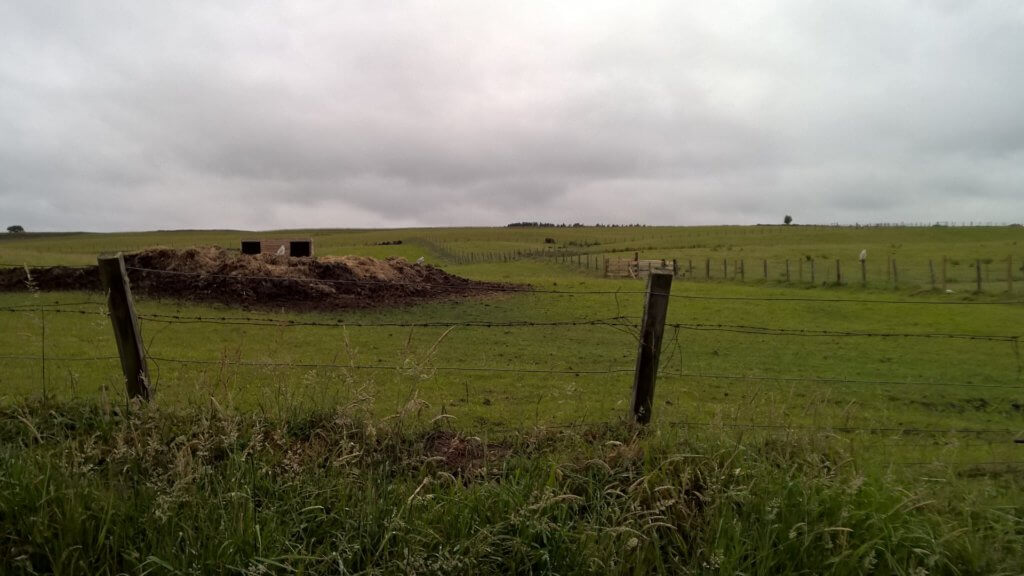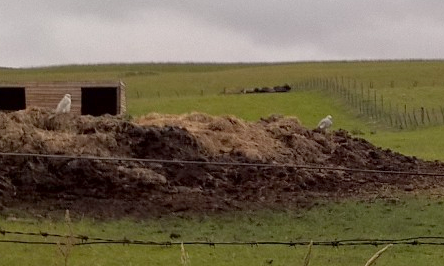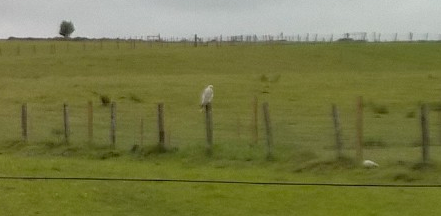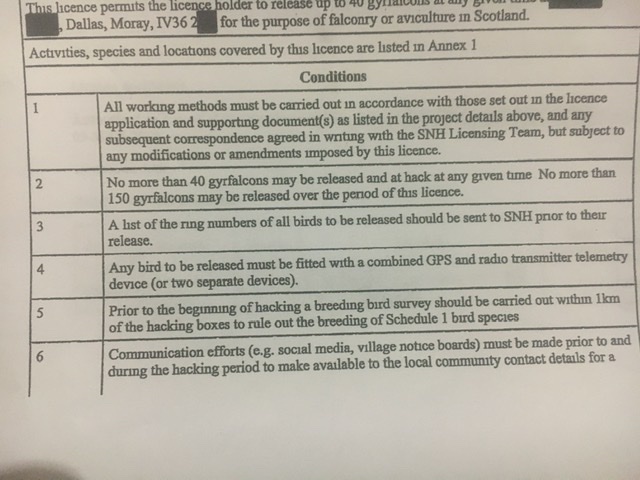Regular readers of this blog may remember how amazed I was to learn that Gyr Falcons and perhaps hybrid falcons were being wild-hacked in Moray. Wild hacking involves releasing birds into the wild temporarily with the aim of toughening them up and recapturing them, in this case to export them to the Middle East.
You might remember this image from Moray showing three large white attractive falcons;

…and these two enlargements…


This year SNH issued a licence (licence #138313 dated 9 May) for ‘no more than 150 gyrfalcons’ to be released between 1 June and 15 September with no more than 40 to be released at any given time. Wow! That’s a lot of large falcons for a small area.

I visited the area in October to talk to the local residents who are very concerned about this. They say that the local wildlife is affected by all these falcons and that pets and even people have been dive-bombed by the birds.
There are several other places in Scotland where such activities are planned or envisaged (and perhaps being carried out – which should be licensed) so it’s important that the licensing of any such activities is properly done. The wild hacking of hybrid falcons seems to be illegal – is it happening anywhere in the UK?
SNH had promised a meeting to discuss these matters with local residents which was planned for 9 December but this meeting was postponed rather rapidly when the local residents said that they had asked Wild Justice to attend too. There is now a meeting planned for mid January.
So far, SNH has failed to respond to an EIR request for information about the process which led to this licence being issued except to ask for more time. The residents have asked to see the report that the licencee was required to provide (it should have been submitted by 15 October) which should have details of what happpened, how many birds were released, how many escaped etc.
I’ll keep you updated on this matter.
If anyone out there has more information about wild hacking anywhere in the UK then please get in touch.
[registration_form]
This is reminiscent of non native and invasive plant species still being allowed to be planted out as game cover which is pretty f****** outrageous given the amount of time, effort (often voluntary) and money (usually from public/charitable sources) spent trying to clear them elsewhere. It was brilliant to see that in a post on conservation management of woodland TCV – The Conservation Volunteers – they mentioned that rhododendron, cherry laurel and snowberry were invasive species requiring removal AND that they were largely present in the countryside in the first place because they had been planted as game cover. The latter two species are still being sold for that purpose and one nursery is advertising them as good for wildlife as well as game.
Falconry is a Fieldsport after all so not perhaps not surprising that there’s so much leniency here. I’m hardly an expert, but I would have thought that releasing so many birds of prey into the existing territories of naturally occuring ones was asking for trouble. Maybe not such a problem in grouse moor areas though where certain people might be instructed to leave certain birds alone – I believe one keeper in the Angus Glens has a hybrid falcon, and I met a falconer who used to fly his birds on some sporting estates until he shopped a keeper for trying to flog him four goshawk chicks from a nest that was ‘going to be shot out anyway’. On a rather bizarre (not unusual) feature from the Fieldsports Channel there was an English falconer who flew his golden eagle in Scotland when it was attacked by a wild one. The wild bird came off badly and the falconer decided to take it home to help it recover all the way back down to England. The RSPCA confiscated the wild eagle and the claim was it died in their care. So this became a diatribe about the RSPCA not the falconer. That same guy was on a pro Fieldsport podcast where he claimed that barn owls and kestrels were declining due to buzzards and we need to consider their ‘control’. Real champion for birds of prey eh?
A couple of years ago pictures came out of the Angus Glens purporting to show a golden eagle with a very loosely fitting sat tag harness. Even if they were truly that they were only showing a harness coming apart after about five years as the stitching biodegrades so the bird doesn’t have to carry a no longer working sat tag. The harnesses also have built in weak points so if they get caught in anything they should break to release the bird. As far as I know no stationary sat tag signal has ever been traced back to a bird, dead or alive, caught up by its harness. These things really are well thought out and designed.
Of course the pics were from the Angus Glens so were presented and largely received in a very negative manner. Let’s imagine that IF someone wanted to try and discredit the valid use of sat tags, all they would need to do is get a sympathetic falconer with an eagle, fit it with a mock up dodgy harness (or alter one taken from a dead eagle – regular supply I would imagine), fly it and take pictures to your heart’s content. We have some friends in the falconry sector, but nowhere near as many as we should and quite a few that are opponents. Sad and frustrating.
This is my land (NOTE NOT MY BIRDS) I would like to know who has taken these photos as it put my farm at risk to crazy people like my neighbours.
THEY DID NOT HAVE PERMISSION TO POST PICTURES OF MY LAND
Don’t think anyone owns the image rights to their face, land or possessions. If you have concerns about harassment suggest you tell the Police?
Most photographs taken have backgrounds, not necessarily belonging to the photographer. This could be any field, anywhere, as far as I can see. It’s a huge leap of the imagination to presume these pictures would pose any kind of risk! If we start thinking like that, tourists taking holiday snaps could be in a lot of trouble.
If the image was taken from a public road, and it is being used in an editorial manner, then there is the possibility that permission to publish is not required.
Furthermore, if the photographer doesn’t know who owns a particular piece of land, how would that person go about finding out? But more to the point, why would they bother?
They might not have knowledge of photographic laws, so why go through the hassle of trying to find out who owns land (a sometimes impossible task in the UK), on the off-chance that publishing the image might offend an unknown landowner?
They know who I am and I have very distinctive farm buildings as I keep it rustic.
I have taken this to the authorities as they are bullies since I’ve moved here and have nothing better to do with their time but irritate the working community up here
Isn’t this a place to raise and discuss concerns about the licensing process and potential damage to local wildlife, in this case by large numbers of non-native birds of prey being released at one time.
I don’t believe this blog is meant to be about you, Anon.
There don’t seem to be any distinctive or ‘rustic’ farm buildings in the photos, anyway.
As you are posting this as “Anon”, it is impossible to know to whom we have to send the information you request.
Do we know whether the Blue falcon people are those involved? If so it appears that most of the birds they produce are Gyr/Peregrine hybrids and such birds are not supposed to be hacked. These birds look like gyr falcons in the main so it is difficult for an inspector viewer to tell what the birds actually are genetically. Until I read the Blue Falcon site I always thought hacked birds were taken back in when they had learned to fly properly but it seems their birds at least are out until they are learning to hunt. Not that good for local wildlife, but if its only rabbits?
This raises lots of questions.
However this is still far better than birds being stolen from the wild to supply the Middle East falconers.
The place Mark talks about is not Blue Falcon. But I checked out their website just now: It says that they fly their falcons in a Scottish glen. Would be interesting to know whether they have a licence?
On the subject of captive breeding: Breeders are quick to boast that their trade helps to prevent wildlife crime like the poaching of raptor eggs. There are no reliable data that we know of to back up this claim. If you read some reports in the media of this year alone you see that the poaching of eggs from the wild is still ongoing.
I heard that SNH allow it to happen in the North Lowther moorlands SPA, that must good for the harriers.
Interesting thing about the falcons dive bombing people and pets. Escaped trained/tame falcons can cause harm as we have seen in the press: (Aberdeen Press and Journal, July 4, 2019); (The Telegraph, August 4, 2017); (BBC news November 11, 2019, Pet Chihuahua grabbed by bird of prey). I own a small dog so I would be worried if I lived nearby. Do those birds wear any tracking devices, and can they be controlled through them?
Still no reply from the blogger of this site- obviously only cares for his own goals and not the fact that they have put my farm at risk from his crazy activist followers. I have said already I would like no part in this personal feud my neighbours have waged war on all because they couldn’t purchase a bit of land. Pathetic and sad persons with no jobs to fall back on and keep them busy.
The working community up here do not condone the action of three households up here.
Maybe if their properties were photographed and put online their perspectives would change.
Second time my land has been used by these sad individuals to try get me involved by taking pictures of my property.
Mark Avery should get in contact with other people other then people that only want to agree with his views.
I would just like to point out that there is a marked difference between a conservationist and an activist.
Mr Avery, Wild Justice and their followers are advocates for wildlife and wild spaces. No one’s personal interests are being served here in any way. It is also highly improbable that anyone who is concerned for the state of and potential abuse of Britain’s countryside would EVER cause harm to anybody’s property.
Imported birds of prey that are flown in large numbers in a small area, ultimately for the gratification of a few in another land, should really be the concern of all of us. A couple of pictures of an anonymous and non-descript piece of land seem somehow insignificant against the alarming bigger picture.
It seems that no one has broken any laws here.
It is quite legal to take photos of private property from a public place.
It is (it appears) quite legal to fly and release the falcons.
Anon appears to have a choice
Either allow the falcons to be on his/her land and accept that some people may object – which they can do if it is done legally. Anon may see these objections as bullying, others may see it as a right to object.
OR
Stop the flying of the falcons but Anon may wish to stand up for the right to legally fly falcons.
Anon’s choice, perhaps not a happy one.
Jon – Anon and other residents don’t have the power to prevent legally licensed falcons from visiting their land. If SNH grant licences then all local residents have to put up with these birds, like them or not.
Wow. I am quite shocked now. Are you saying that SNH has the power to grant somebody a licence to fly their birds of prey (who can potentially cause harm to myself or my pet) over my land without my consent?
C Richards – t5hank yopufor your first comment here. Yes, I think they do. But I guess the argument might be that there is little or no harm…
I would just like to point out that there is a marked difference between a conservationist and an activist.
Mr Avery, Wild Justice and their followers are advocates for wildlife and wild spaces. No one’s personal interests are being served here in any way. It is also highly improbable that anyone who is concerned for the state of and potential abuse of Britain’s countryside would EVER cause harm to anybody’s property.
Imported birds of prey that are flown in large numbers in a small area, ultimately for the gratification of a few in another land, should really be the concern of all of us. A couple of pictures of an anonymous and non-descript piece of land seem somehow insignificant against the alarming bigger picture.
Be quiet ******* I know this is your comment [Mark writes: name removed because I have no idea whether ‘Anon’ is right or not. And if somene chooses to use an alias here that is rather up to them]. You and your friends are complete waste of space!
We’ve discussed this in person and you know that I specifically asked you to keep pictures of my property out of it and you have disrespected my wishes.
It alarms me that a licence can be granted for any non-native species, which cannot necessarily be contained in a field, such as llama and alpaca; and doesn’t contribute to the nation’s food stocks: buffalo and ostriche, for example.
In this case, few checks and very little local examination took place before this licence was handed over. What is the point of a licence if not to ensure that nothing and no one is disturbed or threatened by whatever it is that’s being licenced?
And the big thing is, we are not talking about someone exercising a couple of kestrels here. The impact of more than three dozen raptors, free to fly at one time, is bound to be negative. We see them all over the place when they are out, in and over our properties, sitting in the road and on fence posts. And not necessarily with devices attached.
Sometimes it really seems as if Scotland’s Natural Heritage is not quite as important as we would like to imagine.
So, finally somebody is privy to some of the procedures involved in SNH’s licensing. This process has been alarmingly obscure in the past and hidden from the public eye. Keep us posted.
I wonder why licensing and the facts considered when granting a licence are not available for the public to see. We have to resort to freedom of information requests, but then still don’t know what made SNH grant the licence. Aren’t we as taxpayers, who ultimately fund bodies like SNH entitled to know?
Something interesting to consider in this context which I came upon recently: SNH’s ‘Balancing Duties’. Makes for some interesting reading. See SNH Guidance Note: ‘Balancing Duties’, especially under point 6. In there it says that ‘the balancing duties do not override the general aims and purposes for the organisation’. Looking at a lot of the information we acquired through our FOI requests, it looks to me as if SNH is largely ignoring this, but chooses to license in favour of big landowners and so called ‘business interests’.
If you go on SNH’s (www.nature.scot) website under ‘about SNH’, a different picture is presented to the public. I do not question that SNH does some good work as well, but they are losing credibility.
If SNH think this licence is compatible with their stated aims then they will need to be prepared for many locals like us up and down the country. They cannot be surprised when people object. Until you witness the scale of this operation it’s very difficult to explain.. I am shocked that SNH would risk it. After all what are SNH there for if not to protect our ‘natural heritage’. The release of any raptors en masse is going to affect wildlife. That’s just common sense.
150!!!
One of the issues with hacking in this country is suitable and sizable area for it to happen.
I do know a lot of falconry centers that release wild injured birds will hack to make sure they can successfully hunt once properly released back into to the wild, therefore I wonder if the brood meddling scheme has done this too? And presumably under licence
The issue here is that these birds are wild-hacked in large numbers and that they are non-native species.
But the negative impact of 40 birds of prey, being wild hacked at the same time, on resident species such as curlew and lapwing, as well as swallows and buzzards that are often swooped on whilst in flight, is a no-brainer.
I’m interested to know what the impacts are to wildlife, at what scale, and if there are any adverse impacts to species at a population level? Considering the hacking only takes place for a few weeks in the summer and in a small area, surely any impacts would be localised and temporary and, therefore, be unlikely to have any major significant impacts.
Posted by Mark Avery on behalf of Anand Prasad:
I have a basic knowledge of falconry as i was very interested as a teen until I learnt how cruel it is, especially with Accipiters. All the books I read in the 70s taught that hacking was a way of getting prime hunters. What is the point of a falconry bird that doesn’t hunt.
From Wikipedia
Hack (Falconry)
Flight
Hacking has an indefinite time period because it depends on the weather conditions and the personality of the bird. At this flying stage, the raptors learn how to self-hunt but are still fed and watched over. Males are more likely to hunt independently before females do
https://en.wikipedia.org/wiki/Hack_(falconry)
On this basis i find the statement presented to SNH suspicious to say the least.
P.S.
From Falconry for Beginners (W. Ruttledge, 1967)
Glossary
Hack(n &v): Liberty allowed to young hawks until they start to prey for themselves, or to an older hawk that is being returned to the wild
Anyone who still has access to a library can probably find a copy of
A Manual Of Falconry by Michael Woodford
If you are able to access old ornithological records, a Gyr Falcon was sighted on a mountain called Morvan in Caithness near Altnabreac at the turn of the last century. Since then, there have been hundreds of sightings of them in western Scotland. I have been told of a pair of Gyrs breading on one of the north western islands of Scotland. To be fair to Anon, what he is doing is legal; he has a permit. He obviously is a very good breeder and thanks to him, there is no necessity to steal any from the wild and I am sure he has trackers on all his birds. Really, if you want to moan about something, look into how many raptors are killed in wind farms, power lines or what pigeon fanciers have to put up with. There a more Peregrines here in the UK now than there have ever been. They were over protected to a degree where they are now everywhere. A racing pigeon was sold recently for €1600000.00 so we need to understand why pigeon fanciers get cross when they lose up to 4 pigeons a day during beading season. I personally know a falconer/breeder who is a life long friend and believe me, what he has contributed to preservation, none of the above critics will match. Look at the success of Dr Carl G. Jones & the Mauritius kestrel and the late Dr Tom Cade & the East coast American Peregrine falcon to name a few.
By the way Anon, whose ever those birds they look pretty great.